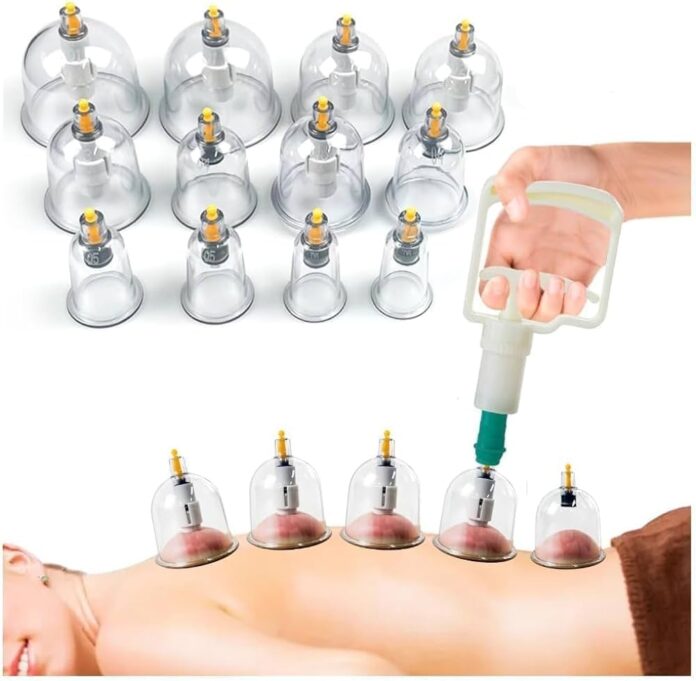In the realm of natural healing, Hijama (also known as cupping therapy) stands out as one of the most ancient and trusted methods for enhancing blood circulation. Originating from centuries-old practices rooted in traditional medicine, Hijama has evolved into a medically guided procedure endorsed by health professionals worldwide. When conducted by trained doctors, this technique can stimulate better blood flow, oxygen delivery, and cellular repair, all without the need for synthetic drugs or invasive interventions. As more individuals seek natural alternatives to boost circulatory health, Hijama in Dubai has emerged as a premier wellness option supported by qualified medical practitioners.
Introduction to Hijama Therapy
Hijama, derived from Arabic, means “sucking” or “drawing out.” It refers to a process where doctors use cups to create suction on specific parts of the body, facilitating the removal of stagnant or congested blood. While it is deeply rooted in prophetic and Eastern medicine, modern practitioners incorporate medical hygiene and scientific protocols to maximize its benefits, especially for blood circulation.
How Hijama Stimulates Natural Blood Flow
One of the most notable effects of Hijama is its ability to naturally enhance blood circulation. By creating localized suction, it draws blood to the surface and promotes better flow through arteries, capillaries, and veins. The process encourages the body to replace stagnant blood with freshly oxygenated blood, which is richer in nutrients and vital elements needed for healing and rejuvenation.
The Science Behind Hijama and Circulation
From a physiological standpoint, Hijama works through mechanotransduction, where physical suction stimulates tissue response and improves microcirculation. When a vacuum is created in the cup, it pulls skin and muscle tissues upward, promoting the dilation of blood vessels. This:
- Improves endothelial function
- Activates capillary refill
- Encourages nitric oxide release for vasodilation
Key Areas Treated for Circulation with Hijama
Doctors select specific points based on individual circulatory complaints. Common areas include:
- Upper Back (Shoulder Blades) – Targets neck and upper body circulation.
- Lower Back – Improves lumbar and pelvic blood supply.
- Calves and Legs – Helps with varicose veins and venous insufficiency.
- Behind the Knees – Stimulates peripheral blood flow.
- Head and Nape of Neck – Beneficial for migraines and cerebral blood flow.
Benefits of Hijama for Blood Flow
The following are the top doctor-observed benefits of Hijama for circulatory enhancement:
| Benefit | Description |
|---|---|
| Detoxification | Hijama removes impurities and stagnant blood, freeing space for fresh blood flow. |
| Oxygenation | New blood replaces old, enriching tissues with oxygen and vital nutrients. |
| Capillary Repair | Stimulates the creation of new blood vessels and repair of damaged ones. |
| Reduced Inflammation | Improved blood flow reduces inflammatory markers in the body. |
| Pain Relief | Enhanced circulation often results in less muscle tension and joint stiffness. |
How Hijama Enhances Oxygen and Nutrient Supply
Healthy circulation is not just about moving blood—it’s about delivering essential nutrients and oxygen to all body cells. Hijama helps in:
- Increasing red blood cell turnover
- Enhancing hemoglobin levels locally
- Stimulating interstitial fluid movement
- Promoting lymphatic drainage
Hijama vs Other Natural Circulation Therapies
| Therapy | Approach | Precision | Outcome |
|---|---|---|---|
| Hijama | Mechanical suction and bloodletting | Highly targeted (doctor-guided) | Deep detoxification and flow enhancement |
| Massage Therapy | Manual pressure | Less precise | General muscle relaxation |
| Acupuncture | Needle stimulation | Moderate | Nerve response and minor circulation boost |
| Infrared Therapy | Heat and light stimulation | Generalized | Mild vasodilation |
Role of Hijama in Preventive Circulatory Health
Doctors often recommend Hijama not just for treating poor circulation but as a preventive therapy. When performed periodically, it can:
- Prevent blood stagnation in sedentary individuals
- Help athletes maintain vascular flexibility
- Support metabolic detox for better circulatory health
- Minimize early signs of vascular dysfunction
FAQ’s:
Q1: Is Hijama safe for everyone?
When performed by a trained doctor, Hijama is safe for most individuals. However, it’s essential to undergo a medical evaluation before starting.
Q2: How soon can I feel improvement in circulation?
Many people report feeling lighter and more energized within hours. Full circulatory improvement can be assessed after a few sessions.
Q3: How often should one undergo Hijama for blood flow issues?
Doctors typically recommend once a month or once every two months, depending on the individual’s health status.
Q4: Is there any scientific backing to Hijama’s effect on circulation?
Yes, research has shown increased capillary formation, improved microcirculation, and enhanced oxygen uptake post-Hijama therapy.
Q5: Can Hijama be used along with other medical treatments?
Yes, doctors often integrate Hijama with other physiotherapy or lifestyle plans for holistic circulatory care.
Conclusion
Hijama is a scientifically recognized, doctor-administered therapy that offers a natural, powerful boost to blood circulation. It not only removes stagnation but also encourages the body’s innate healing mechanisms to activate. By targeting precise areas, physicians can help patients achieve better vascular performance, reduced fatigue, and enhanced tissue oxygenation, without drugs or invasive procedures.
































